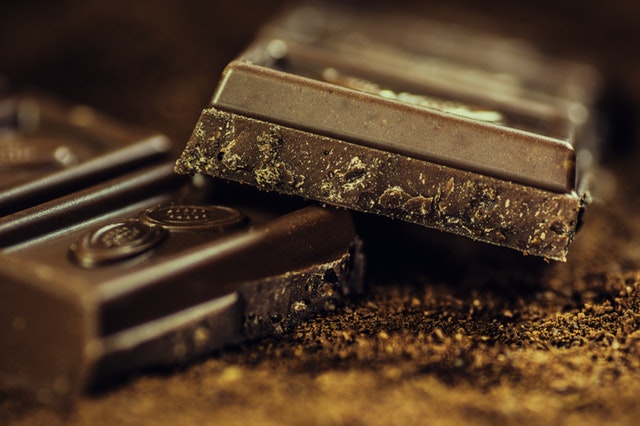Chocoholics have officially entered into the “chocolate eating zone”, also known as the time of year that starts with Halloween in the fall and ends with the Easter and Passover holidays in the spring.
This 6 month “chocolate zone” also includes Thanksgiving, Christmas/Hanukkah, New Years, and of course, Valentine’s Day, all of which include an abundance of delicious chocolate treats. And still, this doesn’t include chocolate we find at work on office desks, at home on kitchen counters, and displayed in most stores throughout this period. Chocolate seems to be everywhere! But… does this mean it’s good for us?
People ask me all the time whether this yummy treat can also be healthy. The answer is simple, if it’s dark chocolate – YES! And there’s really good science to back this up, so let’s dive into this deeper.
Chocolate is made from the cacao bean that is native to Central America. In fact, Kuna Indians from Panama have been enjoying copious amounts (nearly 40 ounces per day!) of hot chocolate for centuries and seem to be immune from many of the cardiovascular and metabolic diseases we suffer in our culture. Most notable of these is high blood pressure (hypertension), which is rare among the Kuna.
There are two primary forms of chocolate – milk chocolate and dark chocolate. Milk chocolate is sweeter and generally has a creamier texture, whereas, dark chocolate has a harder consistency and varying degrees of bitterness depending on the amount of cocoa present. Just about all of the health benefits from chocolate are found in the pure dark version due to the cacao, which is also rich in flavonoids and antioxidants that serve to scavenger up harmful free radicals and eliminate toxins from the body.
Milk chocolate is more processed and refined whereby much of the health-boosting cacao has been removed and in its place is added fat and sugar, both of which, unfortunately, make it more disease-promoting. Thus, it’s wise to always choose dark chocolate over the creamier milk chocolate version.
Exciting new research shows that eating dark chocolate, with its high cacao content (65% or higher), is associated with decreased blood pressure and improved cardiovascular health including, reduced LDL (bad) cholesterol and improved blood vessel function. The antioxidants found within the cacao also help reduce blood vessel inflammation.
It’s important to choose dark chocolate treats that have a cacao content of 60% or greater. This will provide a slightly more distinct flavor and bitterness but is more savory. Most of the health-promoting benefits are achieved with daily amounts of 1-2 ounces, or about the size of a 1”X2” rectangle.
A word of caution, because cacao also contains naturally occurring forms of caffeine, people who are caffeine-sensitive (like me) may need to either avoid it altogether or consume less than an ounce at a time. I recommend you experiment by consuming small amounts of high quality dark chocolate and observe how you feel. The science seems to suggest that the benefits likely outweigh any potential mild side effects.
The bottom line, chocolate is good for you, but only if it’s dark chocolate. So, go ahead and indulge in this aromatic and tasty treat and improve your health while you’re doing it? Yes, treats can be good for you!


